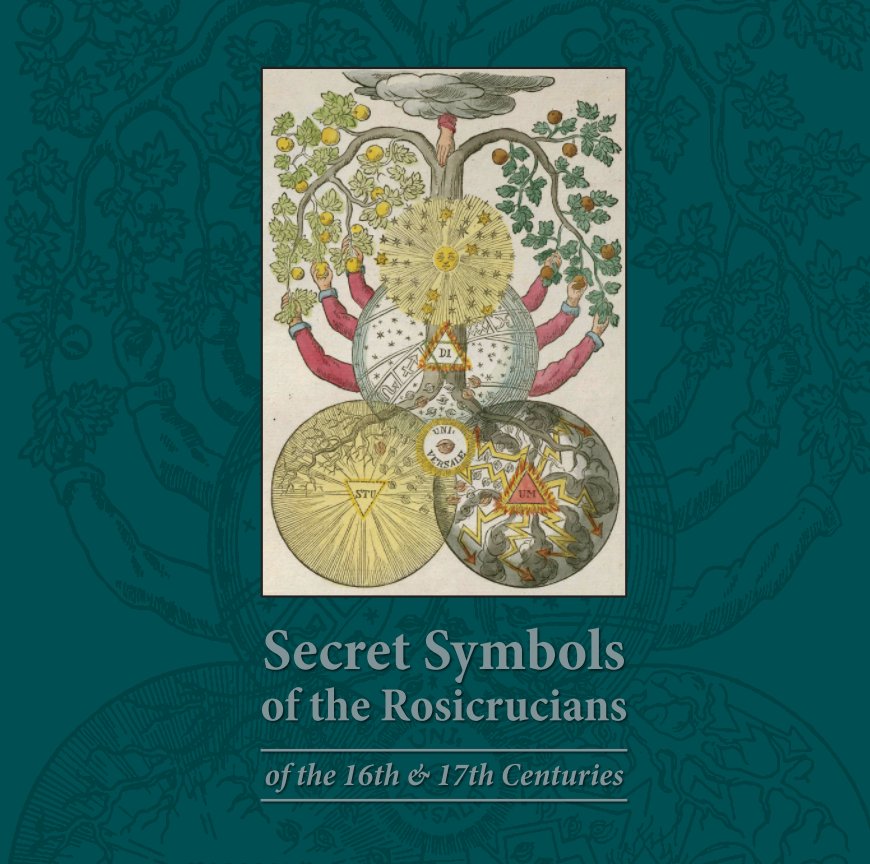Secret Symbols of the Rosicrucians
of the 16th & 17th Centuries - Deluxe Collectors Edition
von Phoenix Press
Dies ist der Preis, den Ihre Kunden sehen. Listenpreis bearbeiten
Über das Buch
For the first time, this remarkable work is reproduced with the original watercoloured prints from the 1788 German edition alongside the English translation published by AMORC, for ease of study and reference. The three Rosicrucian manifestos are also included with the addition of the Speculum Sophicum, a valuable supplementary work.
The mysterious Brothers of the Rosy Cross first appeared in Germany, 1614 with the publication of a pamphlet, Fama Fraternitatis, which quickly generated widespread curiosity throughout Europe. Claiming to be a Christian brotherhood possessing the secrets of Alchemy, they remained elusive and entirely invisible to the public. In spite of this their spiritual ideals of reformation influenced the early 17th century period profoundly enough to entitle it 'the Rosicrucian enlightenment'. Over 170 years later, Secret Symbols was published in Hamburg by the Order of the Golden and Rosy Cross, revealing both the practical and spiritual aspects of the Great Work. Partly hidden in symbol and cabalistic cipher, their teachings are presented in this book through mystical illustration and poetic depictions of Hermetic/Paracelsian philosophy.
“Half a century before the term ‘Rosicrucian’ came into use the sixteenth-century Provençal astrologer and soothsayer, Nostradamus, wrote:
A new sect of Philosophers shall rise,
Despising death, gold, honours and riches,
They shall be near the mountains of Germany,
They shall have abundance of others to support and follow them.
In this quatrain, written in about 1555, Nostradamus seems to have made a strikingly accurate prediction of the Rosicrucian brotherhood as described by its followers. Starting in Germany in the early part of the seventeenth century, this ‘new sect of philosophers’ shunned worldly satisfactions in favour of spiritual ones and were said to have conquered death through the elixir of life."
- The Rosy Cross Unveiled, by C. McIntosh
The mysterious Brothers of the Rosy Cross first appeared in Germany, 1614 with the publication of a pamphlet, Fama Fraternitatis, which quickly generated widespread curiosity throughout Europe. Claiming to be a Christian brotherhood possessing the secrets of Alchemy, they remained elusive and entirely invisible to the public. In spite of this their spiritual ideals of reformation influenced the early 17th century period profoundly enough to entitle it 'the Rosicrucian enlightenment'. Over 170 years later, Secret Symbols was published in Hamburg by the Order of the Golden and Rosy Cross, revealing both the practical and spiritual aspects of the Great Work. Partly hidden in symbol and cabalistic cipher, their teachings are presented in this book through mystical illustration and poetic depictions of Hermetic/Paracelsian philosophy.
“Half a century before the term ‘Rosicrucian’ came into use the sixteenth-century Provençal astrologer and soothsayer, Nostradamus, wrote:
A new sect of Philosophers shall rise,
Despising death, gold, honours and riches,
They shall be near the mountains of Germany,
They shall have abundance of others to support and follow them.
In this quatrain, written in about 1555, Nostradamus seems to have made a strikingly accurate prediction of the Rosicrucian brotherhood as described by its followers. Starting in Germany in the early part of the seventeenth century, this ‘new sect of philosophers’ shunned worldly satisfactions in favour of spiritual ones and were said to have conquered death through the elixir of life."
- The Rosy Cross Unveiled, by C. McIntosh
Autorenwebsite
Eigenschaften und Details
- Hauptkategorie: Religion & Spiritualität
- Weitere Kategorien Medizin & Wissenschaft, Kunst & Fotografie
-
Projektoption: Quadratisch groß, 30×30 cm
Seitenanzahl: 168 -
ISBN
- Hardcover mit Schutzumschlag: 9781364982881
- Veröffentlichungsdatum: Sept. 24, 2015
- Sprache English
- Schlüsselwörter secret symbols, rosicrucian, alchemy
Mehr anzeigen

